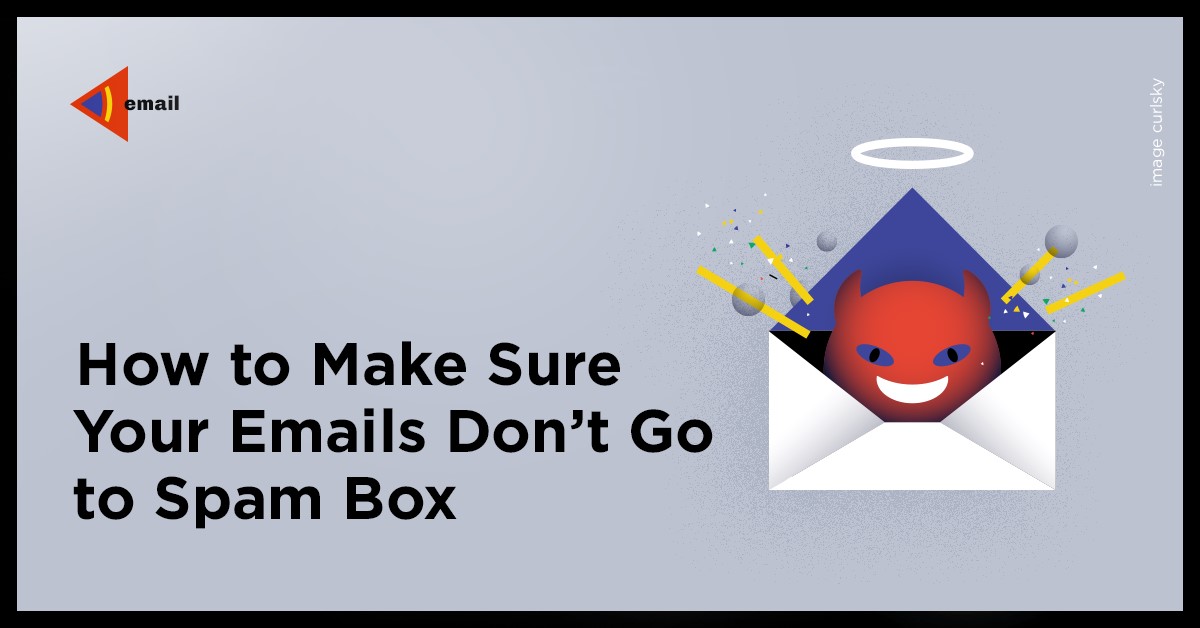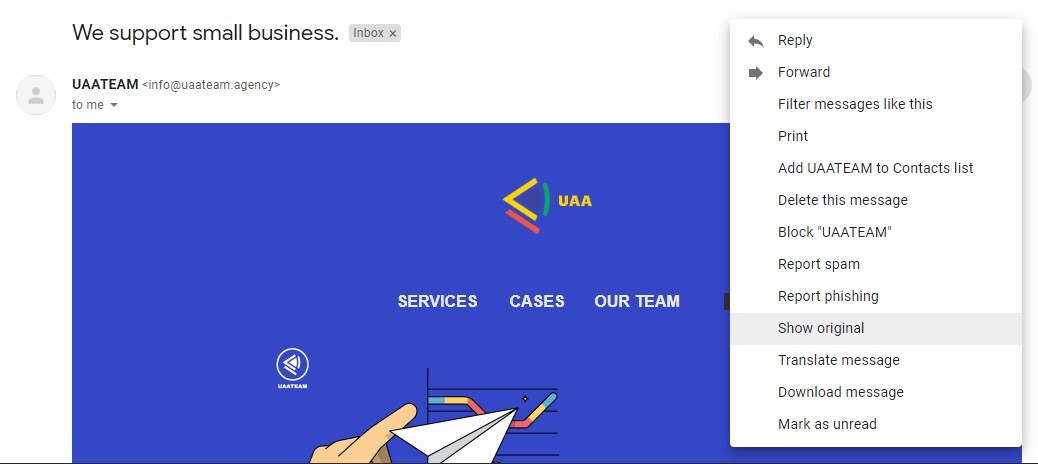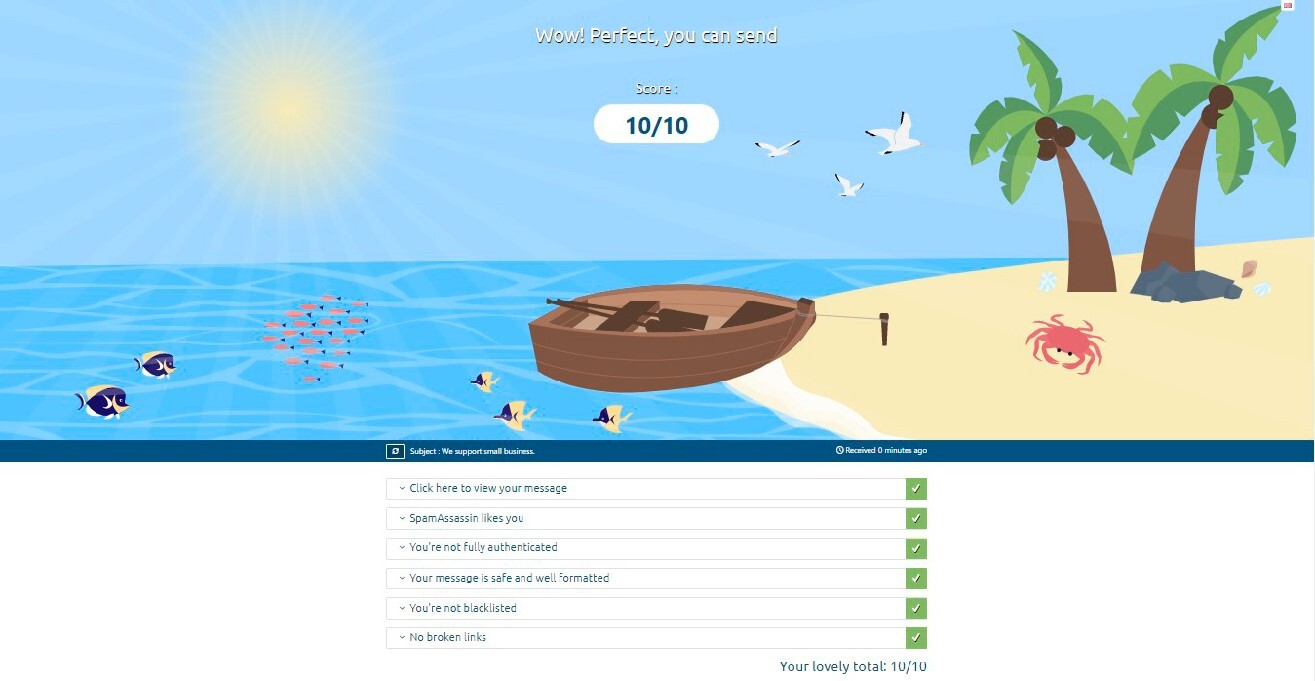
How to Make Sure Your Emails Don’t Go to Spam Box
Even if you know you aren’t a spammer and your subscribers are happy to receive every other letter from you, it won’t be enough. There are some other things you should consider to prove to mailing systems that you’re a responsible sender.
Technical Issues
It is critical to use a domain email address. It’s not an option to use free services like gmail.com because most providers are likely to place such letters into spam folders not to mention inboxes. So it’s always better to do everything properly from the very start rather than regain your reputation later.
So, you’ve created your custom email address with an email hosting provider and it’s time to set up receiving emails. They are usually basic settings created by the provider, but in case there are some gaps it’s better to contact either your provider’s technical support or your technical specialist.
How to check the settings? Just send a letter from a sender’s address to your personal mailbox and then send it back. If everything is delivered, the settings are correct.
After that, set up MX, SPF, DKIM, and DMARC records on your DNS server.
MX records are already correct if you’ve checked successfully the settings of receiving emails. DMARC technology is a plugin so email deliverability might be effective without it. It is an email authentication protocol designed to give email domain owners the ability to protect their domain from unauthorized use.
Don’t forget to add the List-Unsubscribe header which allows subscribers to see an unsubscribe button they can click if they would like to automatically stop receiving your emails.
The easiest way to check your current technical settings is to send a letter to yourself and have a look at the initial letter.
Context & Content Issues
Now that we’re sure of our domain, let’s improve on our letters.
The things to be primarily checked:
- HTML validation
- links
- scripts
- texts (if there are stop words, abusive language, spam trigger words. The list is constantly being renewed and changed by email clients.)
The page layout, its validation and adaptivity can be checked on some popular resources like Litmus or Email on Acid.
Speaking about the validity, we can’t neglect to mention using scripts. That’s what Mail.ru say about their technical requirements (the rest of email clients are unanimous in it): “It’s forbidden to use potentially dangerous objects such as ActiveX, JavaScript, VBScript, Java-applets, Frames и IFrames, connected to external sites CSS, Meta Refresh, etc. (the use of these elements can lead to blocking of your mailings)”.
The single exception is AMP components. This question is still open and being actively discussed, because some email clients don’t support this format. However, it does make sense to monitor the situation because it’s a new trend and the future of email marketing.
Here’s an example of AMP layout from Pinterest, where users can save pins to their boards right in the email (using a “Pin It button”).
The things that might affect email deliverability are:
- broken links
- links shortened by external services
- links leading to IP addresses and domains which are on blacklists
Here are some services where you can check if an IP address is blacklisted:
P.S. Mail-tester is a great free online service that allows you to test the main technical, context and content characteristics of your emails.
Administrative Issues
You’ve created technical records. You’ve designed a valid attractive letter. Now it’s time to send it.
At this stage, it is analyzed by email providers. To be aware of the results of their analysis, you need to set up a postmaster. Top email clients have their own postmasters. It’s a service that collects deliverability data, analyzes them, and checks the sender’s reputation.
It is possible to get some deliverability data from ESP, among other statistics. However, to monitor the rating, you need some more confidential information which isn’t provided by email clients.
Here’s a list of postmasters of top email clients:
- Google — https://postmaster.google.com/
- Mail.ru — https://postmaster.mail.ru/
- Yandex — https://postoffice.yandex.ru/
- Yahoo — https://help.yahoo.com/kb/postmaster
It’s gonna be much easier if your technical records are correct and if you don’t neglect to warm up your domain (to gradually increase the number of the letters sent).
It’s logical by any definition: you’re a newbie, your mailing list isn’t very big, it’s gradually growing as your company is growing. It’s not difficult for email providers to monitor your gradual growth, otherwise you’re bound to have system errors and bad sending reputation.
Attention! Email List
Having passed through all the previous stages, it’s time to validate your email list.
Data Collection Notice. Use the checkbox while filling in forms on the site. Moreover, it’s desirable to avoid pre-ticked boxes in compliance with GDPR rules.
Double Opt-In occurs when a user signs up for an email marketing list, and then an email is sent out to the user which includes a link to click and confirm the subscription. It helps prevent bots, avoid spam filters, and comply with the mentioned previous GDPR rules.
Email List Cleaning
If your email bounce rate isn’t getting lower but it is getting higher instead, it does make sense to remove recurring hard-bounced email addresses from your mailing list. Not all errors recur, so there is no need to make such cleaning at all times.
Alternatively, there are some special email validation and verification services that can do this work for you. They will help you keep your email list updated even with a big number of imported addresses at a time without overpaying and worrying about the next mass mailing.
Here’s a list of the most popular and convenient validation and verification services:
We hope that these main email characteristics will help you improve both the quality and deliverability of your emails.






